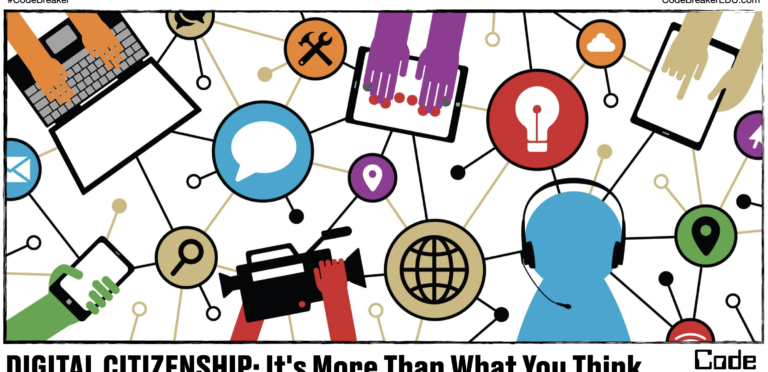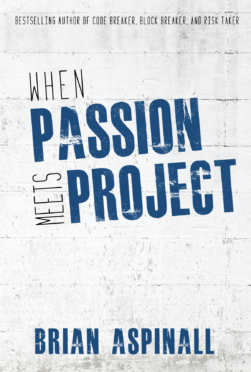By: Daphne McMenemy
If you Google Digital Citizenship, the results are endless. There are a number of sites and resources dedicated to what it means to be responsible online. Two of my favourites happen to be ISTE’s Standards for Studentsand Common Sense Education. These sites, among many others, offer a wealth of information on creating your digital footprint, privacy and security online, trustworthy sources for information, and communication and cyberbullying. These are fantastic resources for when our students begin to explore and build an online presence. But what about what happens before that? How do we talk about responsible use of technology before we’re living online—when what we’re using technology for, what we’re creating with it, lives in the device, not on the internet?
When I introduce technology to young learners, the first thing we talk about is safety. How do we safely handle an iPad? How do we treat the robots? We carry everything with two hands and our robots move around on our classroom floor. We share the technology. We share our knowledge and expertise with one another, and we help our friends who ask for it.

When I started using iPads for content creation, it wasn’t complicated. My instructions were simple and clear: Use this app to create this project. I hadn’t left much room for issues to arise for two reasons. First, anyone using a device was within arm’s reach. And second, I was still very much in control.
As I evolved as an educator, I was learning to release more control over the classroom, empowering students to make the classroom theirs, not mine, to make decisions that allowed them to discover and create, and to take responsibility for their own learning. With this type of learning comes very high expectations for making the right choice. If you are using the technology, the expectation is that you are using it appropriately, responsibly, and respectfully. And not out of fear of getting into trouble, but because it’s the right thing to do. But that doesn’t happen magically. It happens through discussion, practice, and application.
As I began giving students more control over their creative projects and more of an opportunity to build self-regulation, situations not previously experienced began to surface. Some students, as expected, required more time and opportunity to build those ever-important self-regulation strategies. Some needed support to hone their time management skills. Regardless, every “problem” that arose was neither surprising nor serious. Until it was.
One afternoon I learned that we needed to have a discussion about photos as a teary-eyed 6-year-old showed me a video that had been created. It was a photo of him that he willingly posed for. But upon his head rested a cartoon clown hat and he was donning sparkly heart-shaped sunglasses, singing. This was problematic for him. While this may not sound like a big deal, when you’re 6, it’s life altering.
Reactive me wanted to remove the technology. In fact, reactive me did exactly that. No technology, no problem. Reflective me knew that no problem meant no learning. I took to Google to find some information about how to address our issues more specifically. But I couldn’t find what I needed. Most of my research lead me to online behaviour. So, I did the next best thing, probably the first thing I should have done actually. I went to a colleague with experience with technology and digital citizenship. Much of what we do with our younger students and technology isn’t online and if it is, that piece is in our hands. They don’t have the capacity to understand the world wide web, and just far it spans. I couldn’t find what I needed. I couldn’t find a resource that outlined that piece before we find ourselves living in cyber space.
In the end, I picked up a marker, a piece of chart paper, and left it in the hands of the twenty people this needed to make sense to. I defined the term digital citizen as someone who uses technology to create, to communicate with others, and to find things out and they did the rest. I posed the questions: How do I use technology? How am I showing digital citizenship? And I listened to what they said. I learned what they knew, and what they didn’t. Turns out they knew that they shouldn’t take photos of others without asking, but most didn’t know why. They knew they shouldn’t change or edit photos or projects but couldn’t really explain why and temptation far outweighed anything else. As far as they were concerned it was because I said so. Ah. There it was. I was doing a great job of stating rules, but without meaning and relevance, rules are just words. I just assumed they knew.
And so, where did that leave us? It left me with a whole new appreciation of stated and implied rules and expectations with technology. It left them with a clear understanding of empathy and digital citizenship. And it left us with a brand-new anchor chart that found a permanent home on the wall of our classroom. A daily reminder of doing the right thing with our technology.

There is so much more to digital citizenship than our online behaviour. We often graze this discussion because our youngest learners are rarely online without us close by and so maybe it feels like it doesn’t apply to them. The idea of the world wide web is too big for them to grasp and often for us to teach. But maybe it’s time to drop the adjective, “digital”.
Citizenship today needs to refer to more than just online behaviour because it’s what exists before this stage that is so essential. It’s time and space to practice and model empathy and compassion. It’s the conversation that needs to happen so when we’re off in the big wide world of the internet, we have something grounding us. It’s so when we’re surrounded by opportunity and temptation, we make the right choice—and not out of fear of consequence, but out of a duty to do the right thing.

 For all the kids who grow up in a small town and think they don’t stand a chance. You do. I was once that kid.
For all the kids who grow up in a small town and think they don’t stand a chance. You do. I was once that kid.